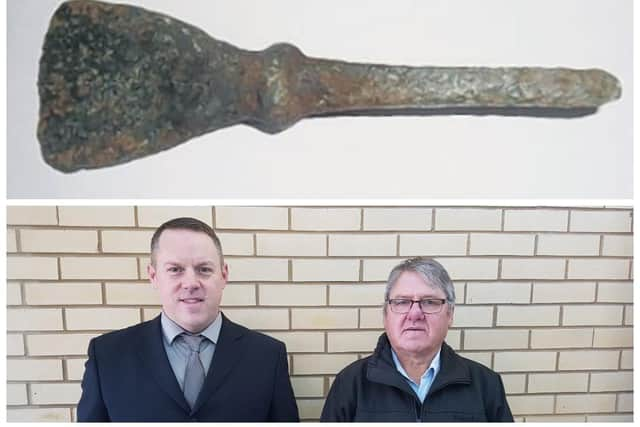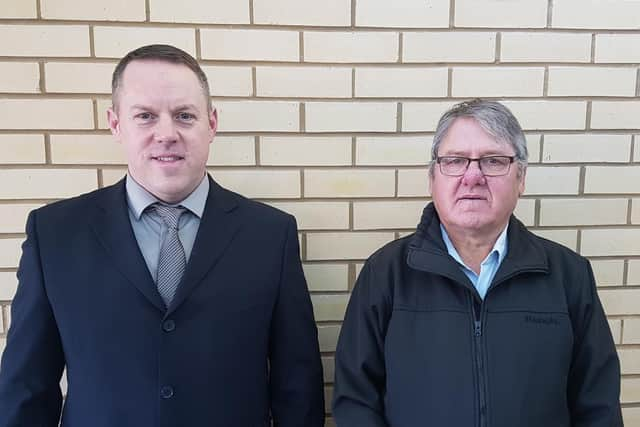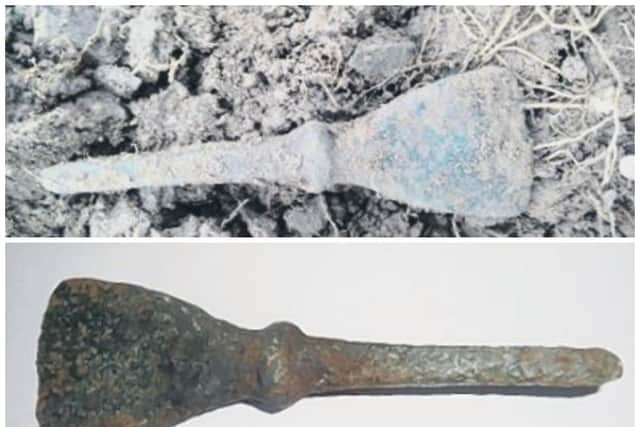3,000-year-old Bronze Age chisel and dagger hoard found near Lancaster is declared as treasure
and live on Freeview channel 276
Matthew Hepworth and David Kierzek unearthed the tanged chisel, knife blade, and two fragments of bronze slag during a find at Bolton-le-Sands, near Lancaster, in February 2013.
The find led to a huge archaeological dig on the site in 2016, led by archaeological social enterprise DigVentures, where a Bronze Age burial mount was subsequently unearthed including burial urns containing human bones, axehead fragments and flint.
Advertisement
Hide AdAdvertisement
Hide AdThe initial items discovered by Matthew and David were called in to Preston Coroners Court on Friday (January 3) after The British Museum registered that they may be treasure.


At the hearing Area Coroner James Newman concluded that the items were indeed treasure and that Lancaster City Museum, which wishes to buy them, would be informed of the result.
During the inquest, Matthew, who has been an amateur metal detectorist for 23 years, appealed to Mr Newman over the other items found on the site by the DigVentures team as well as himself, which included two Bronze Age harness rings and 30 pieces of copper ingot.
Responding, Mr Newman said he would investigate why the items have not all been called in as one larger treasure find.
Advertisement
Hide AdAdvertisement
Hide AdHe said: "It may be that I will go back and enquire about the remainder of the find.


"If there's one hoard then items discovered when that was found should be accounted for.
"If there's somebody buried with these items you would hope they would be kept and returned as one lot."
But Mr Newman confirmed that he could only rule on the four items before him today, which were found to date from the Middle to Late Bronze Age (1,000 - 800 BC).
Advertisement
Hide AdAdvertisement
Hide AdThe report before Mr Newman stated that the tanged chisel was similar to two found in Dorset and Wiltshere, both dating around 1,000 BC.


Speaking after the inquest, Matthew, a charge nurse at Royal Lancaster Hospital, said: "I thought it was a very favourable. [Mr Newman] listened to us and is willing to investigate further.
"I am happy with the treasure but all the items need to be one prehistoric assemblage."
The sale of the treasure will be split between the landowner, who has chosen to remain anonymous, Matthew and David.
Advertisement
Hide AdAdvertisement
Hide Ad44-year-old Matthew, a former UCLan student, added: "Money doesn't come into it for us. We wont be greedy.
"There was a young adult buried on the site so it should not be about that."
Matthew previously discovered a stash of Viking silver in the Carnforth area in 1998, which are also on show at Lancaster City Museum.
What is 'treasure'?
Under the Treasure Act 1996 museums can decide if they want objects found by those who use metal detectors.
Advertisement
Hide AdAdvertisement
Hide AdThe Act has various definitions of treasure, including a found object which is not a single coin, which contains at least 10 per cent of gold or silver and which is at least 300 years old, and any other object found with it.